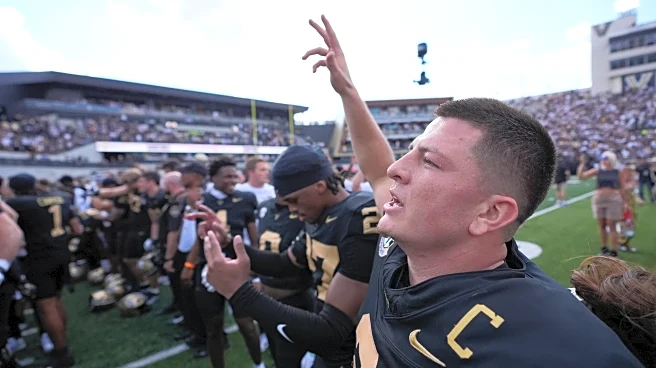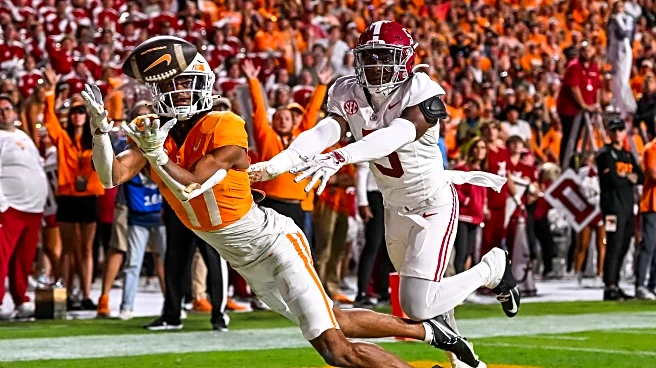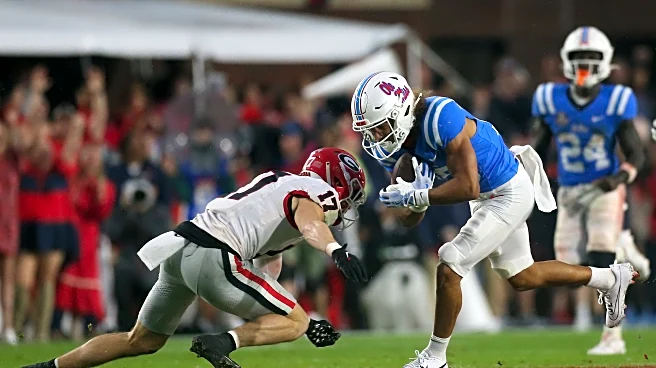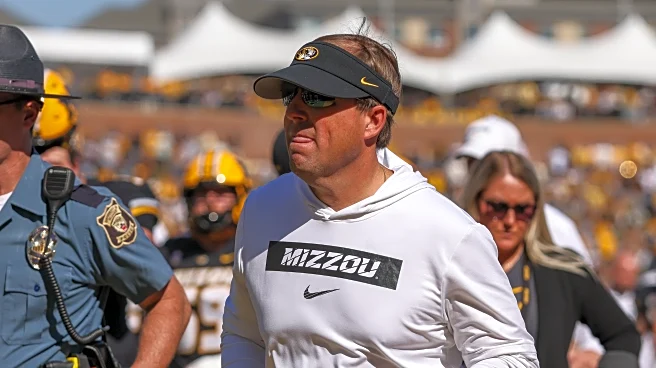What's Happening?
The landscape of college football is undergoing a significant transformation, with traditional powerhouses facing challenges from emerging programs. The introduction of the transfer portal, player compensation,
and an expanded playoff field have contributed to increased parity in the sport. Programs like Arizona State are experiencing newfound success, drawing large crowds and competing at high levels, while traditional giants like Alabama and Michigan face existential questions about their dominance.
Why It's Important?
The shift towards parity in college football is reshaping the competitive environment, offering more teams the opportunity to compete for national titles. This democratization of talent and resources is leading to more unpredictable and exciting seasons, engaging a broader fan base. However, it also presents challenges for established programs that must adapt to the new dynamics. The changes could lead to a more balanced and competitive landscape, potentially increasing the sport's overall appeal and viewership.
Beyond the Headlines
The move towards parity may have long-term implications for college football's structure and governance. As more programs gain prominence, there could be calls for further reforms in player compensation and playoff structures. The evolving landscape may also influence recruitment strategies and the financial models of college athletics, prompting discussions on sustainability and equity in the sport.













